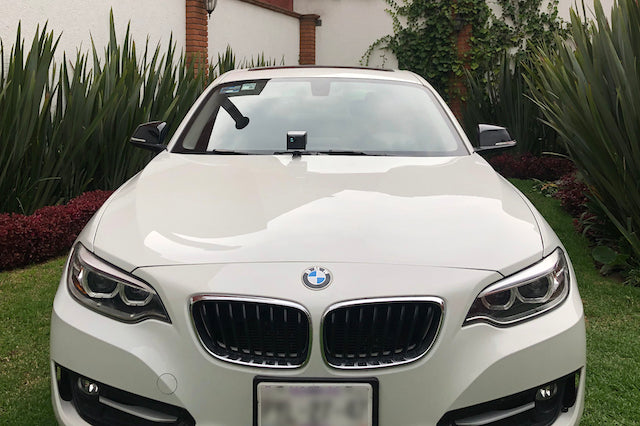Are you looking for a way to increase visibility while driving at night? Oftentimes, headlights don't provide enough visibility for safe driving. That's why a lot of people turn to more advanced technology.
Many people consider night vision cameras the go-to solution. Yet, it's not the best solution because night vision technology is outdated. A newer, more advanced solution has recently hit the mainstream market: thermal imaging technology.
How Long Has Night Vision Technology Been Around?

Night vision technology has been around since 1935. It's a simple concept: it amplifies what little light is left in near-dark settings.
Night vision technology made its debut during World War II. It evolved a lot over the next few decades. Once the Vietnam War era rolled around, night vision equipment became affordable enough for the general public.
Night vision was the only affordable technology available at the time. The public didn't have anything else that could to help them see better at night. It took control of an untapped market, so it became the go-to solution. It largely remains that way to this day. That's because a lot of people don't know that they can upgrade to thermal imaging technology.
A Brief History Of Thermal Imaging Technology
In 1800, an astronomer named Sir William Herschel discovered that there was light beyond the visible spectrum. Every living being emits thermal energy. That energy produces light the naked eye cannot see.
40 years later, someone used the discovery to develop thermal imaging technology. In 1840, Sir John Herschel found a way to see thermal energy through a thin film of oil. The thermal energy would create a heat pattern on the thin film of oil. That invention marked the beginning of thermal imaging technology.
Thermal imaging technology has made great strides over the last two centuries. Because it was expensive, the military, law enforcement, and search & rescue teams pretty much were the only users of the technology. It finally became somewhat widespread in 1991. That year saw a boom in production of thermal units and a steep drop in cost. That paved the way for many different industries to use the technology. But, the general public didn't really have access to the technology until NightRide came out in 2019.
The concept of thermal imaging has been around much longer than night vision technology. Yet, it’s still considered “newer” technology than night vision.
Thermal Imaging Technology Saves The Day
Thermal imaging technology offers so many more benefits than night vision technology. For example:
- The ability to provide an image in any circumstance (even in dusty, foggy, or smoky weather)
- The ability to work in any lighting (or lack thereof)
- The ability to see through obstacles like shrubbery or fences
- The ability to track residual heat
Thermal imaging technology often saves the day when night vision technology can’t. That's why today the military, law enforcement, and search & rescue teams choose thermal imaging over night vision. Here are a few real world examples of when thermal imaging technology came to the rescue:
1. Capture Of The Boston Marathon Bomber

Image Credit: BBC
In 2013, a couple of terrorists set off two homemade bombs in a crowd full of people at the annual Boston Marathon. The bombing killed 3 people and injured many people.
A few days later, the police found one of the terrorists hiding inside a boat, under the boat cover, in a resident's backyard. They located and captured him because they used thermal imaging technology. Without the technology, the police would've had a harder time finding the terrorist. Click here to see the footage the police used to capture the Boston bombing suspect.
2. Rescue Of A Woman Trapped Inside A Burning House

Image source: Menlo Fire UAS
Firefighters often use thermal imaging cameras to find people trapped in burning buildings. It's impossible to see through smoke with the naked eye, and a night vision camera is useless in such a situation. Thermal imaging cameras are the only devices that can see through smoke.
In 2018, there was a house fire and an occupant was stuck inside the building. Black smoke filled the house, and there was no way for the firefighters to know where the occupant was. Luckily, they had a thermal camera that came to the rescue. The camera helped the firefighters navigate through the house. They located the occupant and saved her before the room exploded in flames.
You can read the riveting story here.
3. Detection Of Cyclists At Intersections

Image Credit: KATU
In Portland, every intersection has coil sensors that can sense the presence of cars. This helps the city determine when traffic lights should turn green. But there was a problem: the sensors weren't sensitive enough to detect bicyclists. Considering how Portland is a bicycling mecca, that was quite a problem.
The city found a solution: thermal imaging cameras. These cameras could detect bicyclists and trigger the system to turn the lights green. Here's a news story about this.
Thermal Imaging Cameras Are Almost As Affordable As Night Vision Cameras
For a long time, night vision technology was the go-to technology for many drivers. That's because night vision cameras were much more affordable and accessible.
That changed when NightRide came into the picture a few years ago. NightRide is the most affordable thermal imaging solution available on the market. In fact, its affordability gave a lot of regular drivers access to thermal imaging technology. The technology is no longer exclusive to wealthy people and large businesses and organizations.
NightRide Vs. Night Vision Cameras

(A screencap from a night vision road cam in New York)
A NightRide thermal imaging camera costs only a few dollars more than a night vision camera. But it offers so much more value. For starters:
- NightRide can help you see in total darkness or partial darkness. You can only use a night vision camera when it's dark enough, but not too dark. It's because night vision technology relies on some light (but not too much light) to work well.
- NightRide works in any type of weather or outdoor condition. Whether it's rainy, snowy, dusty, smoky, foggy, or clear outside, your NightRide camera will give you a clear image of what's out there. You can't say the same about night vision cameras.
This post goes into more depth about how NightRide offers much more value than night vision cameras.

